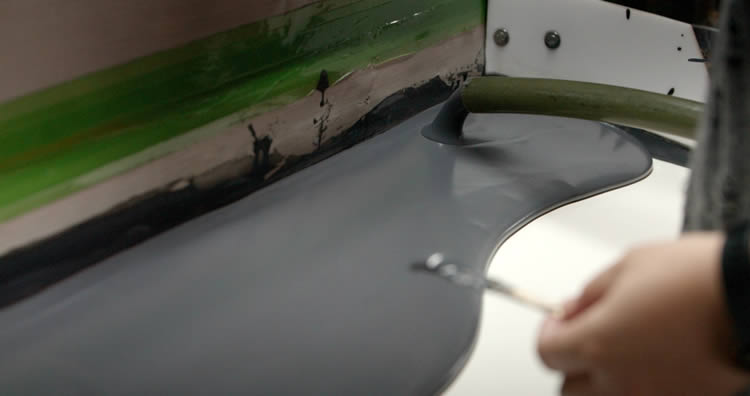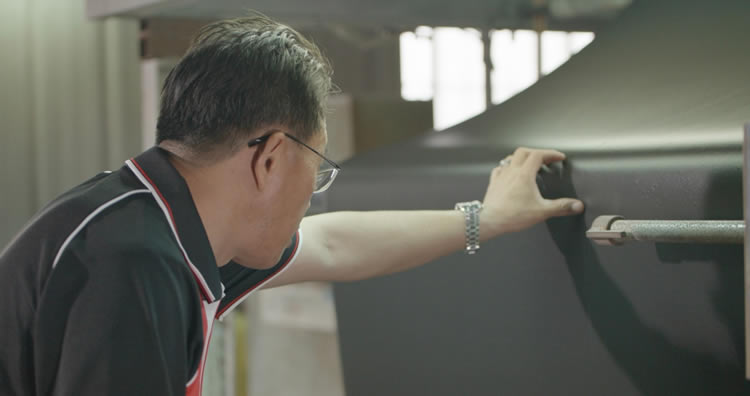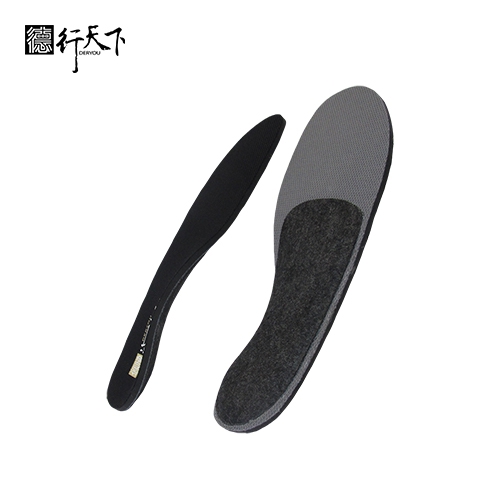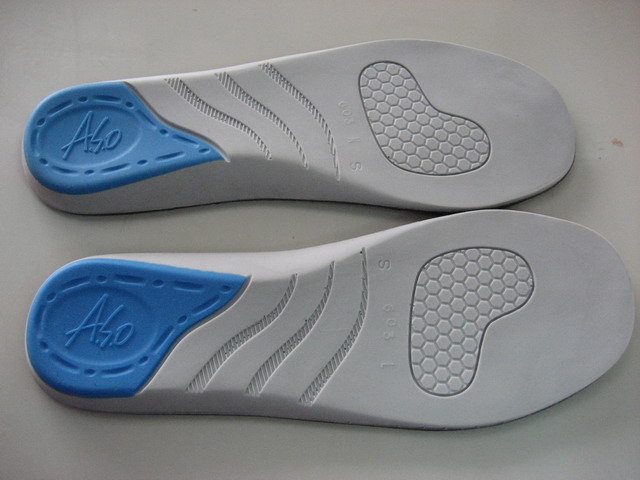Introduction – Company Background
GuangXin Industrial Co., Ltd. is a specialized manufacturer dedicated to the development and production of high-quality insoles.
With a strong foundation in material science and footwear ergonomics, we serve as a trusted partner for global brands seeking reliable insole solutions that combine comfort, functionality, and design.
With years of experience in insole production and OEM/ODM services, GuangXin has successfully supported a wide range of clients across various industries—including sportswear, health & wellness, orthopedic care, and daily footwear.
From initial prototyping to mass production, we provide comprehensive support tailored to each client’s market and application needs.
At GuangXin, we are committed to quality, innovation, and sustainable development. Every insole we produce reflects our dedication to precision craftsmanship, forward-thinking design, and ESG-driven practices.
By integrating eco-friendly materials, clean production processes, and responsible sourcing, we help our partners meet both market demand and environmental goals.


Core Strengths in Insole Manufacturing
At GuangXin Industrial, our core strength lies in our deep expertise and versatility in insole and pillow manufacturing. We specialize in working with a wide range of materials, including PU (polyurethane), natural latex, and advanced graphene composites, to develop insoles and pillows that meet diverse performance, comfort, and health-support needs.
Whether it's cushioning, support, breathability, or antibacterial function, we tailor material selection to the exact requirements of each project-whether for foot wellness or ergonomic sleep products.
We provide end-to-end manufacturing capabilities under one roof—covering every stage from material sourcing and foaming, to precision molding, lamination, cutting, sewing, and strict quality control. This full-process control not only ensures product consistency and durability, but also allows for faster lead times and better customization flexibility.
With our flexible production capacity, we accommodate both small batch custom orders and high-volume mass production with equal efficiency. Whether you're a startup launching your first insole or pillow line, or a global brand scaling up to meet market demand, GuangXin is equipped to deliver reliable OEM/ODM solutions that grow with your business.



Customization & OEM/ODM Flexibility
GuangXin offers exceptional flexibility in customization and OEM/ODM services, empowering our partners to create insole products that truly align with their brand identity and target market. We develop insoles tailored to specific foot shapes, end-user needs, and regional market preferences, ensuring optimal fit and functionality.
Our team supports comprehensive branding solutions, including logo printing, custom packaging, and product integration support for marketing campaigns. Whether you're launching a new product line or upgrading an existing one, we help your vision come to life with attention to detail and consistent brand presentation.
With fast prototyping services and efficient lead times, GuangXin helps reduce your time-to-market and respond quickly to evolving trends or seasonal demands. From concept to final production, we offer agile support that keeps you ahead of the competition.
Quality Assurance & Certifications
Quality is at the heart of everything we do. GuangXin implements a rigorous quality control system at every stage of production—ensuring that each insole meets the highest standards of consistency, comfort, and durability.
We provide a variety of in-house and third-party testing options, including antibacterial performance, odor control, durability testing, and eco-safety verification, to meet the specific needs of our clients and markets.
Our products are fully compliant with international safety and environmental standards, such as REACH, RoHS, and other applicable export regulations. This ensures seamless entry into global markets while supporting your ESG and product safety commitments.
ESG-Oriented Sustainable Production
At GuangXin Industrial, we are committed to integrating ESG (Environmental, Social, and Governance) values into every step of our manufacturing process. We actively pursue eco-conscious practices by utilizing eco-friendly materials and adopting low-carbon production methods to reduce environmental impact.
To support circular economy goals, we offer recycled and upcycled material options, including innovative applications such as recycled glass and repurposed LCD panel glass. These materials are processed using advanced techniques to retain performance while reducing waste—contributing to a more sustainable supply chain.
We also work closely with our partners to support their ESG compliance and sustainability reporting needs, providing documentation, traceability, and material data upon request. Whether you're aiming to meet corporate sustainability targets or align with global green regulations, GuangXin is your trusted manufacturing ally in building a better, greener future.
Let’s Build Your Next Insole Success Together
Looking for a reliable insole manufacturing partner that understands customization, quality, and flexibility? GuangXin Industrial Co., Ltd. specializes in high-performance insole production, offering tailored solutions for brands across the globe. Whether you're launching a new insole collection or expanding your existing product line, we provide OEM/ODM services built around your unique design and performance goals.
From small-batch custom orders to full-scale mass production, our flexible insole manufacturing capabilities adapt to your business needs. With expertise in PU, latex, and graphene insole materials, we turn ideas into functional, comfortable, and market-ready insoles that deliver value.
Contact us today to discuss your next insole project. Let GuangXin help you create custom insoles that stand out, perform better, and reflect your brand’s commitment to comfort, quality, and sustainability.
🔗 Learn more or get in touch:
🌐 Website: https://www.deryou-tw.com/
📧 Email: shela.a9119@msa.hinet.net
📘 Facebook: facebook.com/deryou.tw
📷 Instagram: instagram.com/deryou.tw
Private label insole and pillow OEM Taiwan
Are you looking for a trusted and experienced manufacturing partner that can bring your comfort-focused product ideas to life? GuangXin Industrial Co., Ltd. is your ideal OEM/ODM supplier, specializing in insole production, pillow manufacturing, and advanced graphene product design.
With decades of experience in insole OEM/ODM, we provide full-service manufacturing—from PU and latex to cutting-edge graphene-infused insoles—customized to meet your performance, support, and breathability requirements. Our production process is vertically integrated, covering everything from material sourcing and foaming to molding, cutting, and strict quality control.China high-end foam product OEM/ODM
Beyond insoles, GuangXin also offers pillow OEM/ODM services with a focus on ergonomic comfort and functional innovation. Whether you need memory foam, latex, or smart material integration for neck and sleep support, we deliver tailor-made solutions that reflect your brand’s values.
We are especially proud to lead the way in ESG-driven insole development. Through the use of recycled materials—such as repurposed LCD glass—and low-carbon production processes, we help our partners meet sustainability goals without compromising product quality. Our ESG insole solutions are designed not only for comfort but also for compliance with global environmental standards.Thailand flexible graphene product manufacturing
At GuangXin, we don’t just manufacture products—we create long-term value for your brand. Whether you're developing your first product line or scaling up globally, our flexible production capabilities and collaborative approach will help you go further, faster.Taiwan insole ODM design and production
📩 Contact us today to learn how our insole OEM, pillow ODM, and graphene product design services can elevate your product offering—while aligning with the sustainability expectations of modern consumers.Customized sports insole ODM China
According to new research, plastic pollution in the ocean may serve as a source for new antibiotics. A new study suggests that ocean plastic pollution might harbor bacteria that produce antibiotics effective against resistant strains. Many environmentalists point to plastic pollution in the ocean as a large and growing problem, pointing to the Great Pacific Garbage Patch and how even the High North can’t escape the global threat of plastic pollution. Another serious, though seemingly unrelated problem is the global health threat from antibiotic-resistant bacteria. These disparate issues come together in new research, where scientists have found that ocean plastic pollution could be a source for new antibiotics that may be effective against effective antibiotic-resistant bacterial strains. Plastic pollution in the ocean may serve as a source for novel antibiotics, according to a new student-led study conducted in collaboration with the Scripps Institution of Oceanography. The research will be presented at the American Society for Microbiology’s conference in Washington, D.C. on June 9-13, 2022. Scientists estimate between 5 and 13 million metric tons of plastic pollution enter the oceans each year, ranging from large floating debris to microplastics onto which microbes can form entire ecosystems. Plastic debris is rich in biomass, and therefore could be a good candidate for antibiotic production, which tends to occur in highly competitive natural environments. Exploring the Plastisphere for Antibiotic Production To explore the potential of the plastisphere to be a source of novel antibiotics, the researchers modified the Tiny Earth citizen science approach (developed by Dr. Jo Handelsman) to marine conditions. The researchers incubated high- and low-density polyethylene plastic (the type commonly seen in grocery bags) in water near Scripps Pier in La Jolla, California for 90 days. The researchers isolated 5 antibiotic-producing bacteria from ocean plastic, including strains of Bacillus, Phaeobacter, and Vibrio. They tested the bacterial isolates against a variety of Gram-positive and negative targets, finding the isolates to be effective against commonly used bacteria as well as 2 antibiotic-resistant strains. “Considering the current antibiotic crisis and the rise of superbugs, it is essential to look for alternative sources of novel antibiotics,” said study lead author Andrea Price of National University. “We hope to expand this project and further characterize the microbes and the antibiotics they produce.” This project was part of a STEM education project funded by the National Science Foundation. Meeting: Microbe 2022
Jumping Spider Close Up Harvard study shows jumping spiders can distinguish living objects from non-living objects based on their movement. Add this to the list of real-life spidey senses: Harvard researchers have shown that jumping spiders are able to tell the difference between animate objects and inanimate objects — an ability previously known only in vertebrates, including humans. Using a specialized treadmill system and a point-light display animation, the team of scientists found that these spiders are able to recognize biological motion. This type of motion refers to the visual movements that come from living organisms when they are moving. The visual cue is how people, even babies, can tell someone is another person just by the way their bodies move. Many animals can do this, too. The ability, which is critical for survival, is evolutionarily ancient since it is so widespread across vertebrates. The study from the Harvard team is believed to be the first demonstration of biological motion recognition in an invertebrate. The findings pose crucial questions about the evolutionary history of the ability and complex visual processing in non-vertebrates. “[It] opens the possibility that such mechanisms might be widespread across the animal kingdom and not necessarily related to sociality,” the researchers wrote in the paper, which was published in PLOS Biology on July 15, 2021. The study was authored by a team of researchers working in the lab of Paul Shamble, a John Harvard Distinguished Science Fellow. Massimo De Agrò (previously a postdoctoral researcher in the lab and now at the Animal Comparative Economics laboratory at the University of Regensburg, Germany) lead the project, along with co-authors Daniela C. Rößler (now a Zukunftskolleg Postdoctoral Fellow at the University of Konstanz and the Max Planck Institute of Animal Behavior), and Kris Kim (a researcher in the Shamble Lab). The researchers chose jumping spiders to test biological motion cues because the animals are among the most visually adept of all arthropods. With eight eyes, for example, vision plays a central role in a wide range of behaviors. They placed the jumping spiders, a species called Menemerus semilimbatus, into a forced-choice experiment. They suspended the spiders above a spherical treadmill so their legs could make contact with it. The spiders were kept in a fixed position so only its legs could move, transferring its intended direction to the sphere which spun freely because of a constant stream of compressed air shooting up below it. (Friendly disclaimer: No spiders were harmed during the experiment and all were freed in the same place they were captured afterward.) Once in position, the spiders were presented two animations as stimuli. The animations were called point-light displays, each consisting of a dozen or so small lights (or points) that were attached to key joints of another spider so they could record its movements. The body itself is not visible, but the digital points give a body-plan outline and impression of a living organism. In humans, for example, it only takes about eleven dots on the main joints of the body for observers to correctly identify it as another person. For the spiders, the displays followed the motion of another spider walking. Most of the displays gave the impression of seeing a living animal. Some of the displays were less real than others and one, called a random display, did not give the impression it was living. The researchers then observed how the spiders reacted and which light display they turned toward on the treadmill. They found the spiders reacted to the different point-light displays by pivoting and facing them directly, which indicated that the spiders were able to recognize biological motion. Curiously, the team found the spiders preferred rotating towards the more artificial displays and always toward the random one when it was part of the choice. They initially thought they would turn more toward the displays simulating another spider and possible danger, but the behavior made sense in the context of jumping spiders and how their secondary set of eyes work to decode information. “The secondary eyes are looking at this point-light display of biological motion and it can already understand it, whereas the other random motion is weird and they don’t understand what’s there,” De Agrò said. The researchers hope to look into biological motion recognition in other invertebrates such as other insects or mollusks. The findings could lead to greater understanding of how these creatures perceive the world, De Agrò said. For more on this research, read How Spiders Can Distinguish Living From Non-Living Objects in Their Peripheral Vision. Reference: “Perception of biological motion by jumping spiders” by Massimo De Agrò, Daniela C. Rößler, Kris Kim and Paul S. Shamble, 15 July 2021, PLOS Biology. DOI: 10.1371/journal.pbio.3001172
Several FDA-approved drugs significantly reduce the ability of the Delta variant of SARS-CoV-2 to replicate in human cells. Scientists found FDA-approved drugs that reduce the replication of SARS-CoV-2 by targeting viral enzymes, offering new treatment possibilities. Several FDA-approved drugs — including for type 2 diabetes, hepatitis C and HIV — significantly reduce the ability of the Delta variant of SARS-CoV-2 to replicate in human cells, according to new research led by scientists at Penn State. Specifically, the team found that these drugs inhibit certain viral enzymes, called proteases, that are essential for SARS-CoV-2 replication in infected human cells. “The SARS-CoV-2 vaccines target the spike protein, but this protein is under strong selection pressure and, as we have seen with Omicron, can undergo significant mutations,” said Joyce Jose, assistant professor of biochemistry and molecular biology, Penn State. “There remains an urgent need for SARS-CoV-2 therapeutic agents that target parts of the virus other than the spike protein that are not as likely to evolve.” Previous research has demonstrated that two SARS-CoV-2 enzymes — proteases including Mpro and PLpro — are promising targets for antiviral drug development. Pfizer’s COVID-19 therapy Paxlovid, for example, targets Mpro. According to Jose, these enzymes are relatively stable; therefore, they are unlikely to develop drug-resistant mutations rapidly. Katsuhiko Murakami, professor of biochemistry and molecular biology, Penn State, noted that these virus proteases, because of their capabilities to cleave, or cut, proteins, are essential for SARS-CoV-2 replication in infected cells. “SARS-CoV-2 produces long proteins, called polyproteins, from its RNA genome that must be cleaved into individual proteins by these proteases in an ordered fashion leading to the formation of functional virus enzymes and proteins to start virus replication once it enters a cell,” Murakami explained. “If you inhibit one of these proteases, further spread of SARS-CoV-2 in the infected person could be stopped.” The findings were published today (February 25, 2022) in the journal Communications Biology. Testing Protease Inhibitors in Live Human Cells The team designed an assay to rapidly identify inhibitors of the Mpro and PLpro proteases in live human cells. “Although other assays are available, we designed our novel assay so it could be conducted in live cells, which enabled us to simultaneously measure the toxicity of the inhibitors to human cells,” said Jose. The researchers used their assay to test a library of 64 compounds — including inhibitors of HIV and hepatitis C proteases; cysteine proteases, which occur in certain protozoan parasites; and dipeptidyl peptidase, a human enzyme involved in type 2 diabetes — for their ability to inhibit Mpro or PLpro. From the 64 compounds, the team identified eleven that affected Mpro activity and five that affected PLpro activity based on a cut-off of 50% reduction in protease activity with 90% cell viability. Anoop Narayanan, associate research professor of biochemistry and molecular biology, monitored the activity of the compounds using live confocal microscopy. “We designed the experiment so that if the compound was affecting the proteases, you would see fluorescence in certain areas of the cell,” said Narayanan. Antiviral Effects and Combination Therapy Next, the team evaluated the antiviral activity of the 16 PLpro and Mpro inhibitors against SARS-CoV-2 viruses in live human cells in a BSL-3 facility, the Eva J. Pell ABSL-3 Laboratory for Advanced Biological Research at Penn State, and discovered that eight of them had dose-dependent antiviral activities against SARS-CoV-2. Specifically, they found that Sitagliptin and Daclatasvir inhibit PLpro, and MG-101, Lycorine HCl and Nelfinavir mesylate inhibit Mpro. Of these, the team found that MG-101 also hindered the virus’s ability to infect cells by inhibiting protease processing of the spike protein. “We found that when the cells were pretreated with the selected inhibitors, only MG-101 affected the virus’s entry into cells,” said Narayanan. In addition, the researchers found that treating cells with a combination of Mpro and PLpro inhibitors had an additive antiviral effect, providing even greater inhibition of SARS-CoV-2 replication. “In cell culture, we showed that if you combine Mpro and PLpro inhibitors, you have a stronger effect on the virus without increasing toxicity,” said Jose. “This combination inhibition is highly potent.” Insights from X-Ray Crystallography To investigate the mechanism by which MG-101 inhibits the activity of Mpro protease, the scientists, including Manju Narwal, postdoctoral scholar in biochemistry and molecular biology, used X-ray crystallography to obtain a high-resolution structure of MG-101 in complex with Mpro. “We were able to see how MG-101 was interacting with the active site of Mpro,” said Narwal. “This inhibitor mimics the polyprotein and binds in a similar manner to the protease, thereby blocking the protease from binding to and cutting the polyprotein, which is an essential step in the virus’s replication.” Murakami added, “By understanding how the MG-101 compound binds to the active site, we can design new compounds that may be even more effective.” Indeed, the team is in the process of designing new compounds based on the structures they determined by X-ray crystallography. They also plan to test the combination drugs that they already demonstrated to be effective in vitro in mice. Although the scientists studied the Delta variant of SARS-CoV-2, they said the drugs will likely be effective against Omicron and future variants because they target parts of the virus that are unlikely to mutate significantly. “The development of broad-spectrum antiviral drugs against a wide range of coronaviruses is the ultimate treatment strategy for circulating and emerging coronavirus infections,” said Jose. “Our research shows that repurposing certain FDA-approved drugs that demonstrate effectiveness at inhibiting the activities of Mpro and PLpro may be a useful strategy in the fight against SARS-CoV-2.” Reference: “Identification of SARS-CoV-2 inhibitors targeting Mpro and PLpro using in-cell-protease assay” by Anoop Narayanan, Manju Narwal, Sydney A. Majowicz, Carmine Varricchio, Shay A. Toner, Carlo Ballatore, Andrea Brancale, Katsuhiko S. Murakami and Joyce Jose, 25 February 2022, Communications Biology. DOI: 10.1038/s42003-022-03090-9 Other authors on the paper include Sydney A. Majowicz, graduate student, and Shay A. Toner, undergraduate student, Penn State; Carmine Varricchio, postdoctoral research associate, and Andrea Brancale, professor of medicinal chemistry, Cardiff University; and Carlo Ballatore, professor of medicinal chemistry, University of California, San Diego. The National Institutes of Health, Welsh Government Office for Science and Huck Institutes of the Life Sciences at Penn State (COVID-19 Seed Grant for Jose Laboratory) supported this research.
DVDV1551RTWW78V
Taiwan pillow OEM manufacturing factory 》trusted by clients across wellness, footwear, and bedding industriesTaiwan flexible graphene product manufacturing 》craftsmanship meets efficiency for maximum valueSmart pillow ODM manufacturer Indonesia 》built to serve both niche and mass production needs
下一則: Taiwan insole ODM design and manufacturing factory
限會員,要發表迴響,請先登入


